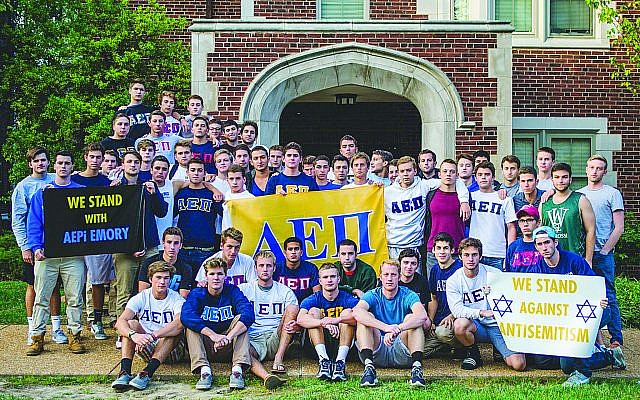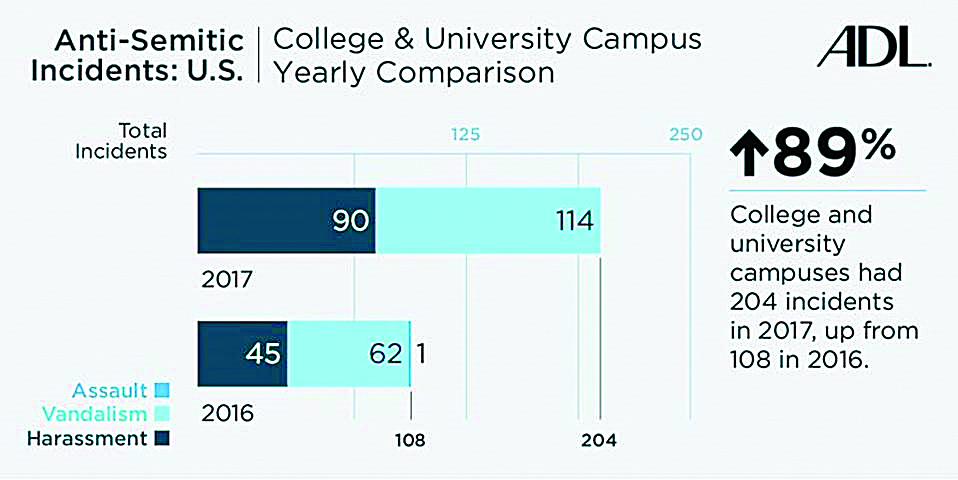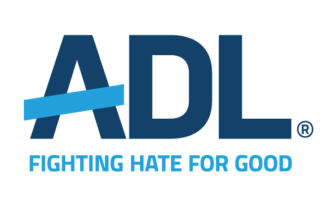Hate and Anti-Semitism on Campus: How to Respond
Anti-Semitic fliers, stickers, banners and posters are increasing on college campuses.
David Hoffman is the associate regional director of ADL Southeast.

In its annual Audit of Anti-Semitic Incidents, the Anti-Defamation League found that the number of anti-Semitic incidents in the U.S. rose 57 percent in 2017, the largest single-year increase on record and the second-highest number reported since the ADL started tracking such data in 1979. The sharp rise was in part due to a significant increase in incidents in schools and on college campuses, which nearly doubled for the second year in a row.
As students return to college campuses around the country, it is imperative to acknowledge the trends ADL is tracking in anti-Semitic and hate-based incidents on college campuses, including harassment, vandalism and assault. Anti-Semitic incidents on college and university campuses across America increased in 2017 to a total of 204, a growth of 89 percent over the 108 incidents in 2016. In regional investigations of similar incidents in Alabama, Georgia, South Carolina and Tennessee, ADL reported a 50 percent increase over the same time period.

Universities across the region, including the University of Georgia, the University of Tennessee, Vanderbilt University, Emory University, Auburn University and Georgia Tech have seen swastikas on their grounds, white supremacist messages in their students’ inboxes, fliers referencing Hitler defacing their property, and invitations offered by student groups for white supremacist leaders to come speak to their community.
While this trend of rising anti-Semitism on campus is disturbing, it mirrors a broader movement of hate appearing on campuses nationwide. ADL’s Center on Extremism has observed a growing number of white supremacist propaganda efforts targeting these college communities, including the distribution of racist, anti-Semitic and Islamophobic fliers, stickers, banners and posters. The 2017-18 data shows a 77 percent increase of incidents from the previous academic year, with 292 cases reported, compared to 165 in 2016-2017. From the fall semester of 2016 through the fall semester of 2017, ADL reported 26 separate incidents of white supremacist groups distributing flyers on campuses throughout the Southeast region.

Though many anti-Semitic incidents are carried out by independent individuals, one cannot turn a blind eye to the efforts and impact of organized white supremacist groups on campus. Groups like Vanguard America and Identity Evropa recognize that college campuses are prime targets because students arrive eager to learn new ideas and develop their own unique identity once they are out of the homes where they were raised.
It should not be surprising that the beginning of these dramatic increases in hateful incidents coincided with the 2016 presidential campaign, when vitriolic rhetoric filled American culture. Jared Taylor, identified by the ADL as an academic racist, proclaimed in January of 2017, “It is widely understood that the election of Donald Trump is a sign of rising white consciousness. … Now is the time to press our advantage in every way possible.”
This rise was seen most widely in the Charlottesville Unite the Right rally, which occurred a year ago. The nationally televised chants of “Jews will not replace us” and “blood and soil,” a callback to a Nazi rallying cry, emboldened some white supremacists to take more violent action, while also causing others to go under the radar and develop more covert methods of spreading their message. Using symbols and code words that are not identified as quickly as swastikas and cries of “Heil Hitler,” these organized groups have developed tactics that make their views seem more appealing to vulnerable college students.
ADL has a variety of resources to support students and community members as they prepare for the upcoming school year on campus, many available for free on our website, www.adl.org. The “Think.Plan.Act.” campaign provides students with tools for dealing with anti-Semitic and anti-Israel incidents on campus. A hate symbols database allows anyone to research nearly 200 symbols based on category or appearance in an effort to identify discriminatory messaging.
There are also a variety of educational programs that ADL can bring to college students to combat hate in their communities. Words to Action is an interactive, customizable program for college and pre-college students that provides resources and tools to strategically respond to anti-Semitism and anti-Israel bias on campus.
Colleges and universities are communities that value diversity and inclusion, creating environments for individual development and communal progress. In the rare incidents where hate occurs on campus, ADL works with students, administration, campus security, local police, and community leaders as deemed necessary. We provide anti-bias programming for universities and resources to both prevent and respond to hate-based incidents on campus, including our new Hate/Uncycled resource for administrators and law enforcement.

ADL has 26 regional offices across the country, and is eager to work with the community to make our college campuses safe spaces where growth and learning can occur. If someone witnesses or experiences a hate-based or anti-Semitic incident, please complete our online Report an Incident form. Your local ADL office will investigate your situation and respond quickly.



comments